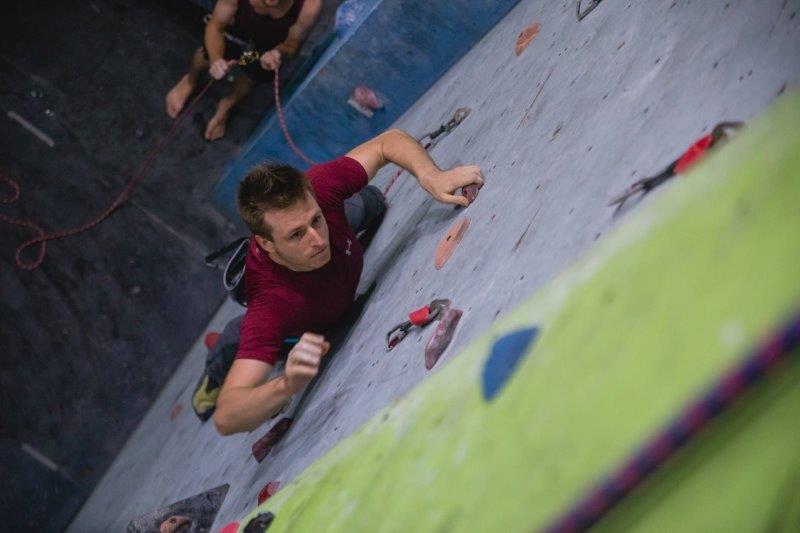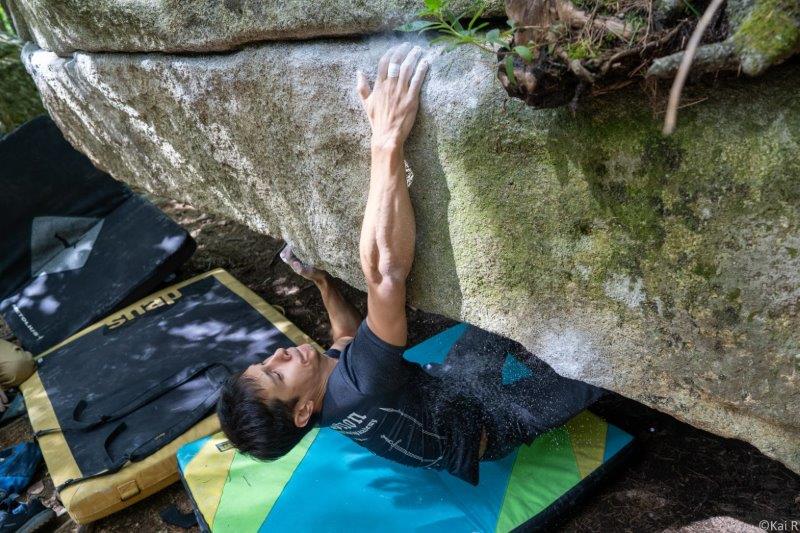Rock climbing is a thrilling sport and pastime that many of us love. Over time, it has become more than just scaling walls – it’s also about getting better technically and up the grading scale.
This is where professional route setting comes in. Route setting is the art of creating these stories and experiences on the climbing wall, as well as translating them into great technical victories for gym goers or competitions. Setting routes often takes immense climbing experience and technical expertise, and certainly isn’t for any individual new to climbing. It takes planning, physical work and some serious dedication, but for those up to the challenge, it can be quite rewarding.
In this guide, we’ll share everything we know about route setting to inform you on setting your first route safely and efficiently in your home gym or local bouldering gym.

Understanding the Basics
Route setting is about designing climbing paths, whether on natural rocks or indoor walls. Simply put, it involves placing holds in a particular sequence to create a ‘path’ that climbers will follow to complete it.
As a route setter, you act as a blend of an artist, engineer, and problem-solver. You’re tasked with crafting routes that are engaging, challenging, and safe for climbers. You should also ensure the routes cater to a variety of skill levels, making climbing accessible and enjoyable for everyone.

Getting Started: Pre-Route Setting Considerations
Before embarking on the actual route setting, pre-route setting considerations are crucial to ensure that the routes will be enjoyable, challenging, and safe.
Here’s some more elaborate insight into pre-route setting:
Understanding the Wall
A crucial starting point is understanding the wall you’ll be working on.
Analyzing the wall’s angles, features, and any existing holds or structures is essential. Each wall has its own unique character and possibilities which can significantly influence the route-setting process.
It’s also important to grasp the wall’s dimensions including its height, width, and depth, along with any overhangs or distinct features like cracks and arêtes.
Knowing Your Audience
Equally important is knowing your audience. Understanding the skill level of the climbers who will be using the routes is key.
Are they beginners, intermediate, or advanced climbers? Is this wall designed for kids? This insight will help in deciding the difficulty of the routes.

If possible, understanding the demographics of your climbers can also be insightful. Different age groups or physical abilities may have different preferences and capabilities which can be taken into account during the route-setting process. For example, some routes may be made of slopers and crimps and hence more focused on balance and technical sit ins. Other routes are designed for longer spans and dyno moves at crux. So depending on the route setter’s strengths and what technique you are trying to train up, you set the route as such.
Safety Considerations
Safety should always be at the forefront of pre-route setting considerations. Ensuring all the equipment you need is in good working order is a must. This includes checking bolts, drills, holds, and personal safety gear.

It’s also vital to ensure that the fall zones are clear and that adequate padding is in place to minimize the risk of injury.
Having a plan in case of emergencies is essential too. Knowing the location of first-aid kits and ensuring that communication devices are available and functional can be life-saving in case of an accident.
Selection of Holds
The selection of holds is another significant consideration. Familiarizing yourself with the different types of holds available, from jugs, crimps, slopers, and pinches, to volumes and their conditions is crucial.
Each type of hold provides a different challenge and checking that they are in good condition is important for both safety and enjoyment. Here are each of the types of holds and their technical focus:
- Jugs: Known for their large, easy-to-grip nature, often characterized by a deep, incut shape which allows for a firm and comfortable grip. The technical focus when utilizing jugs largely revolves around grip strength, arm strength, and endurance.
- Crimps: Demand a higher level of precision due to their small and flat nature. The technical focus extends beyond finger strength to encompass precision in grip and body positioning to effectively utilize the hold.
- Slopers: Holds with a smooth, rounded, and often angled surface, making them difficult to grip. The technical focus when engaging with slopers lies in body positioning, balance, and open-hand grip strength.
- Pinches: Holds that require the climber to use a pinching grip with the thumb on one side and fingers on the other. The technical focus here is on thumb strength, hand strength, and body tension.
- Pockets: Holds with holes or indentations where climbers can insert one, two, or three fingers. The technical focus is largely on finger strength, precision, and body positioning.
- Volumes: Large geometric shapes attached to the climbing wall, altering its surface and creating new angles and holds. The technical focus with volumes is on balance, body positioning, and route reading.
- Edges: Holds with a defined lip or edge that climbers can grip onto. The technical focus is on finger strength, precision, and body positioning.
- Horns and Spires: Protruding holds that climbers can grip from various angles. The technical focus is on grip versatility, body positioning, and balance.

Route Style and Theme
Deciding on the style or theme of your route is also part of the pre-route setting process. Are you aiming for a more technical, balance-focused route, or a powerful, dynamic route?
Thinking about the sequence of moves and ensuring there’s a logical flow can also greatly contribute to making the route more enjoyable. Make sure you gather feedback on previous routes and observe other route setters to learn and improve throughout the process.
Useful video tutorials like this one below can help you start to gather ideas for setting up a unique style for your route.
Environmental Considerations
If moving from indoor to outdoor rock climbing, respecting the natural environment is a paramount consideration. Being mindful of local wildlife and vegetation, and adhering to area-specific regulations is part of being a responsible and ethical route setter.
Professional Development
Lastly, consider investing in professional development. Attending route-setting clinics and workshops, or obtaining certifications can enhance your knowledge and skills. This knowledge then lays a stronger foundation for the route-setting process.
The Route Setting Process
The route-setting process is a mix of creativity, technical understanding, and a keen sense of safety. It involves transforming a vision into a tangible climbing route that provides a good challenge while ensuring climbers’ safety. Here’s a more detailed look into the route-setting process:
Planning
Before anything else, it’s crucial to determine the objective of the route. Is it aimed at beginners or advanced climbers? What kind of physical and technical challenges should it present? You need to set goals to figure out where to go next.
Some route setters find it helpful to sketch the route on paper or digital platforms to visualize the path and the challenges. Sometimes this helps you see exactly which route makes the most sense.
Keep in mind that choosing the right holds is key. Your selection depends on your intended difficulty and the style of the route, so be sure to incorporate this into your plan.
Installation
To install your route, you need to have the right tools, such as wrenches and bolts. This is crucial for installing holds securely on the wall.
Then, it’s time to attach your holds. This is really where the rubber meets the road. The holds are attached to the wall per your plan, though adjustments may be necessary as the route takes shape.
At every step, check that the holds are securely fastened. Safety is absolutely paramount when it comes to this process.
Testing and Adjusting
Once the route is set, it’s time to climb. Route setters or other climbers will now test the route to see if it meets the desired goals. Then, you’ll gather feedback from other climbers who try your route. This feedback is invaluable and easily helps identify any issues or potential improvements.
Based on testing and feedback, you’ll likely make adjustments. This could include repositioning holds, adding or removing holds, or even tweaking the grading of the route.

Documentation and Grading
Documenting the route, including any changes made during the testing phase, is important for future reference and for other route setters.
Then, assigning a climbing grade gives climbers an idea of the route’s difficulty. Grading can be somewhat subjective, but it’s based on the physical and technical challenges presented by the route.
Maintenance
Over time, holds may loosen or become worn. Regular checks and maintenance are crucial to keep the route safe. Plus, sometimes routes may need to be updated or refreshed to keep them interesting or to address safety concerns.
Ultimately, the route-setting process is a dynamic one, often requiring a willingness to adapt, learn, and improve. Through a mix of creativity, technical skill, and a strong focus on safety, route setters can create enjoyable and challenging experiences for climbers.
Advanced Route Setting Techniques
As you get more experienced, you can explore advanced route-setting techniques. Getting creative with holds, adding dynamic moves, and setting routes for competitions are areas where we can let our creativity run wild.
Some advanced route-setting techniques include:
Dynamic Use of Holds: Advanced route setting often involves using holds in unconventional ways to create unique challenges. This might include using the side or underside of holds, or placing holds in orientations that aren’t immediately obvious to climbers.
Volumes: Volumes are large geometric shapes that can be attached to the climbing wall. They can be used to change the wall’s shape, creating new angles and surfaces to climb on. Volumes can hold other holds, creating complex structures on the wall.
Creating Dynamic Moves: Designing routes that encourage or require dynamic movements such as leaps, swings, or dynamic hand swaps can add a thrilling dimension to the climb.
Coordination Moves: These moves require climbers to coordinate multiple body movements at once. They might need to move hands and feet simultaneously or in a particular sequence to progress.
Intricate Sequencing: Crafting routes with complex sequences that challenge climbers to think several moves ahead can provide a mental challenge alongside the physical one.

Final Thoughts
Being a route setter is a blend of creativity, planning, and ensuring safety. Each route we create is an invitation to a new adventure. We hope this guide inspires you to explore route setting and add your own touch to the climbing world.
In the meantime, be sure to check out some of our other climbing guides, such as How to Start Indoor Lead Climbing.

No Comments